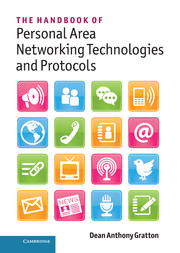I have worked within the wireless communications R&D industry for close to 20 years now and, in my experience, one consistent ingredient that has often escaped the recipe of so many consumer electronic products is simplicity. This facet alone should be instilled, force-fed and, to be honest, beaten into innovators, developers, manufacturers or whomever decides to embark upon developing products that are ultimately wireless-enabled.
.. one consistent ingredient that has often escaped the recipe of so many consumer electronic products is simplicity.
It may be blatantly obvious that, when you remove the ability to connect using a cable, you inevitably introduce a degree of complexity. If the product is too complex to use, the consumer will discard it. Therefore, in a team comprising developers, product engineers, marketers, business management and so on, there must be a number of questions that should fundamentally be debated and addressed prior to embarking upon any product conceptualization, design, its subsequent development and ultimately its marketing. More specifically, these questions and their associated answers should become a prerequisite of any prospective development life-cycle and should be explored exhaustively. Likewise, during the development life-cycle, you should systematically cross reference progress against these answers to ensure that no deviances from the initial objectives have occurred.
In the following paragraphs I offer a basic model or, if you like, a ‘rule of thumb’ when embarking upon new wireless product development. Primarily, the model offered here should be used as a guide when assessing new development for your wireless-enabled product.
In an attempt to establish a foundation upon which an approach to new wireless product development can be solidified, some basic guidelines are provided here. As part of your conceptualization process, issues surrounding Interoperability, Coexistence and Experience (ICE) all need to be addressed and clarified. These facets are not new, but are often overlooked and their purpose here is to enable you to better understand and to encourage you to solidify your product conceptualization.
A term regularly used to characterize how a product from one manufacturer interoperates with a product from another manufacturer. If a consumer purchases a product that is Wi-Fi- or Bluetooth-enabled, for example, then the consumer will expect that product to interoperate with other like-enabled equipment irrespective of manufacturer. It’s probably an over emphasis, as it’s a notion that was established in the very early days of wireless development and can easily be forgotten in a market where manufacturers wish to dominate. Similarly, do you require your product to interoperate with other manufacturers or are you simply looking to create a standalone or unique ecosystem?
Interoperability and coexistence were indisputably the ‘troublesome two’ in the early onset of wireless development and are still a significant factor today. Wi-Fi and Bluetooth were typically pitted against each other as competing technologies. In fact, the press and many features illustrated issues where Wi-Fi and Bluetooth endured problems when sharing the same radio spectrum let alone the same room! Both technologies have suitably advanced and moved amicably forward where Wi-Fi and Bluetooth now provide effective interference techniques to overcome any coexistence and interference issues. More importantly, these are now seen as two separate, independent technologies offering unique applications. Your choice of short-range RF technology will therefore become a significant consideration when embarking upon new product development.
Nowadays, issues of coexistence and interoperability are well understood, as there are several schemes available that overcome any shortcomings. Nevertheless, whilst this facet of the ICE model does reflect the ability to cooperate with multiple manufacturers and their radio spectrums effectively it’s also about ensuring you have selected the right wireless technology for your product. It may be cliché to mention, but it’s a chicken and egg scenario. Undoubtedly, in your technical feasibility you have defined what your intended product will do, along with its future-proofing. Likewise, you have also selected the appropriate technology that will effectively meet your product and marketing requirements; it’s durability in a potentially harsh environment and other factors such as battery life and so on, are all key contributors. The number of wireless personal area networking technologies available to you all deliver expectations that may suit your intended application and audience, but due diligence should be afforded to the frequency, range, durability in an environment where other technologies are likely to be present.
This part of the model is overwhelmingly pinnacle in your product design. It can’t be made any clearer, “How will the consumer interact with my product?” and “How should the consumer experience my product?” If these or similar questions are not addressed at the product definition or prior to the development onset, then the premise of user interaction and/or its interface merely becomes an afterthought, where potentially you may introduce a degree of complexity that can potentially render the product unusable or too complex to operate. Typically, standards bodies or groups who have defined the technology offer terminology that should remain consistent across manufacturers, as well as expectations at the user interface. That said, a manufacturer should be abundantly aware that a product will be operated more often by a complete novice whom has no expertise. The ‘out-of-the-box’ is an ideal experience where the product is unpacked, switched on, and simply operates as intended.
 Excerpt from The Handbook of Personal Area Networking Technologies and Protocols by Dean Anthony Gratton.
Excerpt from The Handbook of Personal Area Networking Technologies and Protocols by Dean Anthony Gratton.
Latest Comments
Have your say!